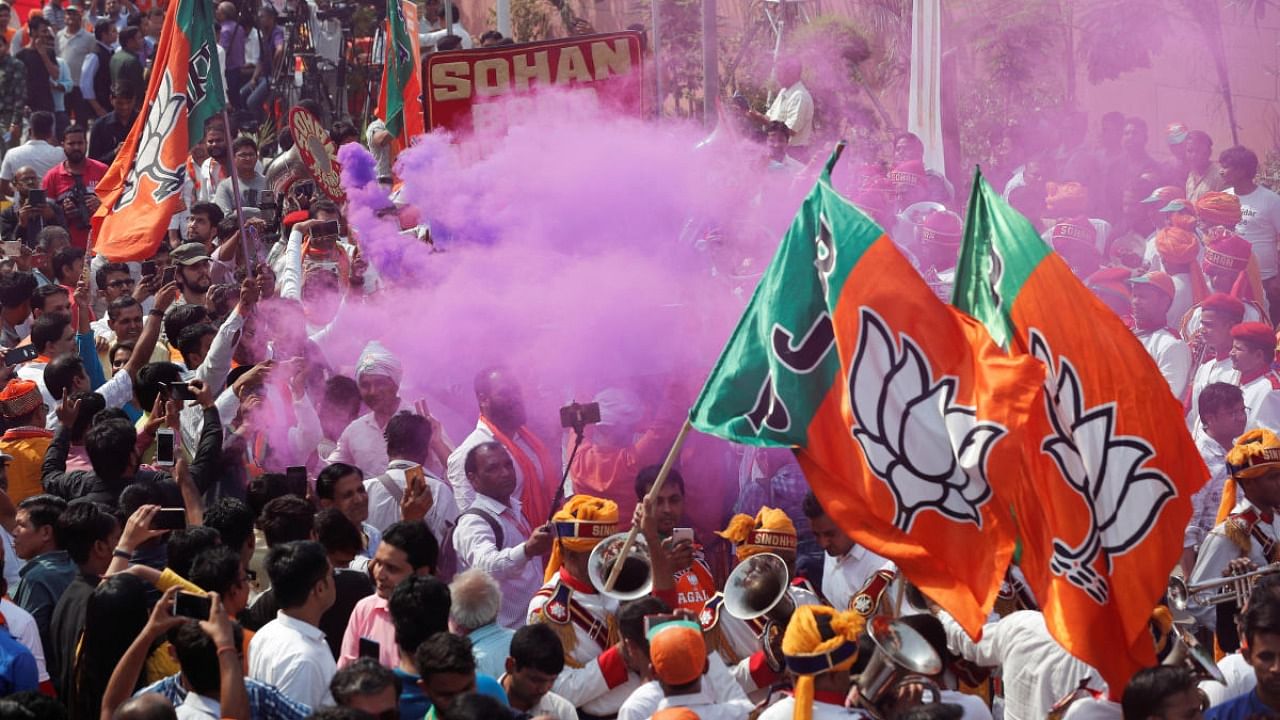
Former BJP ministers Swami Prasad Maurya and Dara Singh Chauhan, who had resigned from the saffron party a few days back and joined the Samajwadi Party (SP), and Suheldev Bhartiya Samaj Party (SBSP) president Om Prakash Rajbhar, who had been a former ally of the BJP and had now allied with the SP, may belong to the OBC but they represent different communities within the same and formed a large chunk of the OBC electorate in the 'Poorvanchal' (eastern) region of Uttar Pradesh. Their support was crucial for any party nurturing dreams to form the next government in the state.
And it was precisely the reason why their departure from the saffron party could severely dent the BJP's electoral prospects in the region, which was swept by the party in the 2017 assembly polls and again in the 2019 Lok Sabha elections.
BJP had bagged 115 of the 164 seats in the 2017 assembly elections riding on its alliance with the Apna Dal (AD) and the SBSP. SP had won 17 followed by the BSP, which had emerged victorious on 14 seats. Congress could manage only two seats while the others, mainly the alliance partners of the BJP, had bagged 16 seats.
A quick look at the caste arithmetic of the 'Poorvanchal' was enough to understand the electoral significance of the 'Rajbhar, Maurya and Chauhan' communities in the region.
Swami Prasad Maurya, a five-time MLA, was considered to be an influential OBC leader and his clout among the voters of his community was evident from the fact that he had a support base among them not only in the eastern but also in some districts in the central region, including Kushinagar, Raebareli, Badayun and Shahjahanpur.
In fact, such was Maurya's importance in the BJP that he was allowed on the stage when PM Narendra Modi inaugurated the Kushinagar airport a few days back. 'Mauryas' were in good numbers in several eastern and central districts.
Similarly, the 'Rajbhars' may be only three to four per cent of the total electorate in UP but their numbers in some eastern districts are sizable. They form around 17 per cent of the electorate in Ghazipur, Ballia, Mau, Varanasi, Chandauli, Azamgarh, Amebdkar Nagar, Baharaich and Maharajganj districts. A shift in their votes could significantly hit the BJP's performance in these districts. Om Prakash Rajbhar wields considerable influence on the voters of his community.
The 'Chauhan' community was also quite sizable in the eastern UP districts of Azamgarh, Mau, Ghazipur and Ballia and could alter the results in more than two dozen assembly constituencies.
While the BJP leaders have claimed that the departure of these leaders will not have any impact on their party's electoral prospects, sources in the party admit otherwise. In the 2017 assembly polls, BJP had polled around 40 per cent votes while the SP's vote share stood at around 20 percent. The saffron party had managed to secure 44 per cent votes of the OBCs in the eastern region. Any significant dent in the OBC votes could hit its prospects.
The fact that BJP had agreed to give more seats to its two OBC allies Nishad Party and Apna Dal (AD) also proved that it apprehended loss in the region. ''BJP may be trying to offset the loss by fielding more candidates from the Nishad Party and AD,'' said a Lucknow-based political analyst.
Watch the latest DH Videos here: